|
Author: Kristen Kennedy Smith Managing stress, especially now, can be tough. We may notice that we are on edge without even knowing why. Over time, our bodies react physically the our mindset and mental state. When we are under pressure, stress, or anxiety for long periods of time this begins to show up in our physical bodies. This can look like tense muscles, shallow breathing, poor digestion, or even headaches and physical ailments. I want to share with you 3 steps that you can do right now to manage your stress. 1. Try alternate nostril breathing 2. Take a break with a child's pose 3. Step into the present by noticing your 5 senses These are techniques that will require no additional equipment, supplies, or tools. Alternate Nostril Breathing This is an ancient technique which is steeped in Ayurveda and Yogic tradition. Directing the breath, or Prana, across the brain helps to reset the central nervous system and relax the mind. When you breathe in through one side and exhale through the opposite side you may realize that your thoughts dissipate and you begin to step into the present moment. I like to relate this to the difference between having several tabs open in your mind versus having just one window open at a time. To perform alternate nostril breathing simply place your thumb on your right nostril, inhale through your left nostril, hold the breath, place your ring finger on your left nostril, and exhale through the right nostril. Then you simply repeat the process by inhaling through the right nostril, holding the breath, placing your ring finger on your right nostril, and exhaling through the left nostril. To help you out, I created a short video to show you what I mean below. Child's Pose This pose helps release stress and anxiety by creating a rooting, calming effect on the central nervous system. It also helps with digestion and is a wonderful way to stretch out the shoulders and hips. You can practice this pose from the floor, from a chair, or while you are in bed to make the pose accessible for you and your body type, joints, and goals. To enter into this pose from the floor you will follow this process:
I created some modification examples for you with the images below. Notice Your 5 Senses
Finally, you can step into your five senses to relieve stress in the moment. This is something that you can do at work without looking silly or drawing attention. You can start by noticing 3 things that you see, then 3 things that you hear, 3 things that you can feel, 3 things you can taste, and 3 things you can smell. The final two may be more difficult, the process of really noticing what is around you in the present moment will help you shift the way you see things and will change your energy in real time. You will be in the present instead of feeling the emotions of the past or anxiety about the future. This is a technique you can come back to as often as you'd like throughout your day. Interested in learning more tips and tricks? Check out my Old Souls Align Membership where I share exclusive content to help empower others to shift their mindset, their lifestyle, and the way they show up in the world with practical, actionable, and affirming resources and skills.
2 Comments
Blog Author: Kristen Kennedy Smith What if I told you simple routines and habits can improve your digestion without even changing what you are eating? Would you try it?
As an Ayurvedic Wellness coach, I help busy people find practical solutions for their health and stress management. It is my mission to improve your daily life with suggestions for routines and habits that can make a MASSIVE difference in how you feel and with how much energy you have throughout the day. I am here today to share 5 ways you can improve your digestion RIGHT NOW without even changing the food you eat. #1: Drink Room Temperature or Warm Beverages In Ayurveda, we think about digestion like a camp fire. We call this digestive fire "Agni" in sanskrit. When you have a fire and you toss ice or cold water on it, what happens? It distinguishes the flame. The same thing happens when you consume frozen or cold foods and beverages. Reducing or eliminating frozen or cold beverages will give your stomach a chance to stay warm, which will help you digest your food. #2: Eat your largest meal at lunch Just as the digestion is fueled by fire, it is best to eat your largest meal when the sun is highest in the sky. This will help you remember to eat the most food between 10am-2pm. This is when the digestion is the strongest and you will have the most time to process and utilize the energy you receive from eating a large meal. Eating a smaller meal at night will help you process the food so that you can digest before going to sleep. #3: Consume meat, poultry, & fish at lunch Because the digestion is strongest during lunch time, it is easier to digest meat and fish during this meal, as well! Meat takes about 24 hours or so to digest. Eating this midday will help your body process the food more effectively so that your body is not working extra hard right before bed. #4: Don't skip breakfast I know, I know...intermittent fasting is tempting. HOWEVER, the best way to kick start your digestion is coff....just kidding...breakfast! Drink some warm water first thing in the morning and then try to eat breakfast before starting your work day. This will help you start the day off right and will provide energy to do all of the things. #5: Wait 3 hours after eating to have a snack Snacks are the best. They're exciting, fun, and tasty! Do you want to digest your snack so that it leaves you feeling energized instead of sluggish? Wait 3 hours after eating your breakfast or lunch. This will give your body a chance to fully process your last meal so that you can easily process the new food entering your belly. I hope that these tips and tricks will help you out and make you feel better throughout your day! If you would like to dive deeper and receive some individual help with digestion or wellness routines let's chat! I am now offering Ayurvedic Wellness Coaching micro sessions. Let's dive into 2021 with a fresh perspective on health and wellness! Click the button below to book your micro-session now. With Light, Kristen Blog Writer: Chanel Mazzone Blog Editor: Kristen Kennedy Smith SAY IT LOUDER FOR THE PEOPLE IN THE BACK.
Our bodies are a beautiful mosaic of differences. Curves, scars, muscles, and different sizes all make us who we are - radiant beings! It would be absolutely wild to assume that there would be “one pose fits all,” if you will. That’s where modifications come in! For each pose, or asana, there are a variety of ways to adapt each post to fit your goals, your body type, or how you are feeling that day. Yoga blocks and straps (which can be substituted for pillows and books or leggings) aid us in our practice. They help soften, lengthen, and deepen our flows. Modifications enable us to let our body feel what it needs to feel. As a bonus, modifications allow our practice to be inclusive and socially just. We aren’t holding any assumptions about what pose would feel like for a body. We are holding space for folks to create a pose that works for their body type and how their body is feeling. Modified yoga allows you to come into class however you are feeling - whether that be tired and sore or invigorated and ready. Modifying a yoga practice allows you to come to class even if you are injured. Our instructors find a way to help modify almost every post. At Affirmations and Innovations, our yoga students are powerlifters, runners, hikers, strength athletes, dancers, etc. Often, they are coming into class sore from other physical activity. Modified yoga also aids in this recovery - giving you time to get into the pose that feels best in your body. In my classes, I try and encourage “creative playtime.” Folks can follow along with me, or they can give their bodies what they need. When we are in tabletop position, that means students can follow me through a cat-cow flow, or they can arch their back from side to side, maybe try out a wide-legged child’s pose, or do some neck rolls. In my class, I try and break away from saying one pose is more challenging than the other because this term feels un-inclusive. Each pose is just a different way of feeling the practice. When we do more traditionally advanced poses, we are challenging our bodies to build strength rather than forcing our bodies into a pose that is uncomfortable. Modifications allow us to build strength in a comfortable and safe way. Blocks and yoga straps are ways to work with our bodies. On my yoga teaching journey, I have found that there are so many different versions and ways to practice each pose. I am always learning new ways and challenge myself to provide a variety of ways to practice each pose. Whenever you come to your mat, know that you are home. Your mat is a safe space to honor your body and carry that practice throughout your life. Modifications are wonderful ways in which we can honor and respect the beautiful and strong bodies we all have! Blog Writer: Emilia Wheaton Blog Editor: Kristen Kennedy Smith The beauty of human ingenuity and creativity is evident in the myriad of the world’s distinct cultures, religions, traditions, artwork and customs. It’s said that “copying is the highest form of flattery” but when it comes to representing something of cultural significance that doesn’t belong to our own culture, there is a fine line between respectfully admiring and mindlessly copying.
Cultural appropriation, as defined by the Oxford American Dictionary, is “the unacknowledged or inappropriate adoption of the customs, practices, ideas, etc. of one people or society by members of another and typically more dominant people or society.” What I see as important to focus on here are the words: unacknowledged and dominant. In the United States and throughout the Western world, there is a clear divide between “white majority” and “colored minority.” This divide might better be described as a dominant culture and less dominant cultures. Though the current social movements are slowly chipping away at white supremacy as we pay rightful yet overdue homage and respect to the cultural diversity we are privileged to live amongst, the present and past follow a narrative of white culture dominating colored cultures. Representing a cultural marker of the oppressed people who created that culture is a dangerous hypocrisy. Imagine yourself in the shoes of another culture; say you and your family are of the Pascua Yaqui tribe, native to the Sonoran Desert of Arizona long before the plot of land which is currently Arizona was robbed from your ancestors. At this time, your ancestors were forcefully stripped of their culture; children were taken from families and forced to learn the language, values, religion and culture of their colonizers. How many elaborate and beautiful headdresses must have been torn from Pascua Yaqui heads two hundred years ago? Native American culture has been diluted, disdained and ignored throughout the years, yet Halloween costumes representing Native cultures are now flying off the shelves. How do you feel seeing the children of your oppressors dressing up in a costume that resembles something your ancestors might have worn? Not great, I’m sure. It probably feels like a slap in the face. Therefore, it is important to recognize your position in the current cultural hierarchy before wearing another culture as a fashion statement. If you pertain to the culture of those who have disenfranchised the culture you wish to represent, it’s probably better not to copy that culture. Granted, there isn’t a formula or a flow chart you can follow to figure out whether you are appropriating culture. You may have good intentions when wishing to represent another culture if you aim to celebrate and appreciate that culture. Wearing a Pochahontas costume is a lot different than shopping at a Native-owned local business where you’ve had a chance to chat with the designer about the historical inspiration of a pair of earrings they have designed. Getting to know and understand a culture is key when trying to pay homage or respect to that culture. Now, in terms of Yoga--the reason we are here at Affirmations and Innovations--it is also important to direct our careful attention to how we may avoid appropriating the Indian cultural origins of the practice Westerners have changed and claimed as their own. It is important to acknowledge that the ancient practice of Yoga does not promote the lucrative industry of sexy spandex leggings but instead promotes detachments from possessions. It is important to remember that yoga practice and spirituality was stifled by British colonizers in India. It is important to acknowledge that Sanskrit symbols and words have an origin with much richer history than the trendy t-shirt printed with an Om symbol. It is important to learn what Yoga truly is, where it originated, what the initial spiritual intentions were and to pay mind to the significance of all it’s symbols and traditions. I highly recommend delving into the Yoga Sutras (the “rules” of Yoga) for a broader understanding of the philosophy and theory behind the spiritual and physical practice. There is such deep beauty, importance and brilliance behind the origins of Yoga. Anyone practicing Yoga owes it to themselves and to the founders of Yoga to become well acquainted with the roots that have fed modern Yoga to be the magnanimous force it is today. Consider purchasing a copy of Yoga and the Sutras of Patanjali from a local bookstore or second-hand shop. Many translations and adaptations of this ancient text exist, though I am partial to this edition. Happy reading, happy practicing. Blog Author: Emilia Wheaton Blog Editor: Kristen Kennedy Smith As an ambitious high schooler, I tended to overburden myself with various advanced classes, leadership clubs, sports teams and little jobs to earn money. I was just beginning to know what stress felt like and had just about zero tools to manage my stress or calm myself down. My mom, wise as she is, would spy on me while doing homework and see that I was barely breathing! She used to have to remind me to breathe and would lead me in short breathwork sessions. At this point, neither of us had ever done yoga or heard of Pranayama, the traditional yogic breathwork techniques used to control our bodys’ energies, but we both felt the energetic shift when we overcame our own inefficient breathing patterns.
She would sit with me while I was on the verge of a panic attack and help me self-soothe by leading me in slow, mindful breath… breathe in… breathe out… I still sometimes catch myself holding my breath and wonder how long it’s been since I inhaled, then remind myself to take some long, intentional breaths. My mom may have been the one to introduce me to Pranayama but the wisdom was passed down to her through centuries of yogic tradition which had seeped into mainstream awareness. Ann Swanson discusses breathwork in her book, Science of Yoga, and defines the word prana to simultaneously mean “vital energy or life-force energy that permeates through us and everything” as well as simply “breath.” Yogis practice breathwork with the intention of changing the quality flow of the body’s energetics. Anatomically speaking, when we fill our lungs with a big gulp of air then s l o w l y exhale, our heart muscle is given a chance to relax. Swanson explains that this is why “elongating your exhales in Pranayama is relaxing.” There are various traditional breathwork techniques designed to impart distinct health benefits. Let’s review a few of them:
Practicing Pranayama throughout your day can help moderate stress by soothing your nervous system or giving you a boost of energy. Combining breathwork to your yoga practice will allow for optimal benefits, as it can help you focus on rhythmic flows and align your body and mind for complete mind-body awareness. If you find yourself overwhelmed or anxious, try one of the Pranayama techniques above to shift your energetic flow. Source: Swanson, A. (2019). Science of yoga. London: Dorling Kindersley. We highly recommend this visually attractive and comprehensive guide to yoga anatomy. Here’s a link to Ann Swanson’s website. Before you rush over to Amazon, consider supporting your local book store--see if they have this book in stock or can order it for you. Blog Author: Emilia Wheaton Blog Editor: Kristen Kennedy Smith Stress in today’s world can be an all consuming distraction from happiness, higher consciousness, and present-mindedness if we allow it to cloud our minds and hearts. Let’s face it: stressors are an inevitable piece of our existence as humans, especially in this given moment of human history where the social, political, and economic realms are seemingly combusting violently and sporadically. I myself have felt my internal stress-o-meter gradually tick tick tick upward toward its limits, and frankly, I’m emotionally fatigued. For the past few months, through a global pandemic, changes in employment, beginning online classes, taking on a foster cat, and now watching our country erupt in social unrest as we feel collective outrage toward the racism bred over centuries.
Needless to say, I am experiencing stress. If we could chart stress rates in live time over the past six months, I am sure we would see a dramatic spike as the pandemic broke out and a steady rise since then. Stress can be pervasive throughout our body. Personally, I feel emotional stress as a tightness in my chest and experience headaches. Mental stress--anxiety I feel about meeting deadlines or making good grades--makes my stomach churn and my mind race as I scramble to assemble to-do lists in my brain. Stress is uncomfortable and distracting and can take us away from enjoying the moments we are gifted with. Now, enough of those negative vibes… this is typically how I am able to process stressors: acknowledge them, validate myself for feeling the way I do, then I make moves to rise above it. One incredibly successful strategy I have to relieve stress: get my creative juices flowing. Encouraging ourselves to express creativity can bring us to a flow state where we lose track of time, zone out and immerse ourselves in something so utterly stress-free that our brain can relax and recuperate. Practicing a new creative hobby for just an hour or two a week brings our mind away from stressors to positively impact the body’s overwhelmed stress-response. Biologically, we are engineered to respond to stressors as if they were life-threatening forces. Our body recognizes a hypothetical encounter with a grizzly bear just the same as the pressure we feel at the end of the month when bills are due. That is to say, the same hormones--adrenaline, cortisol, norepinephrine, amongst others--are leached out into our system each time we experience momentary or sustained anxiety. Prolonged stress takes a substantial toll on the body. Imagine a big angry Grizzly jumping out at you every time the rent is due or your boss lays another assignment on your plate. Truthfully, your body doesn’t really know the difference between the two. I don’t wish to stress you out about the stress you’re experiencing, but I do wish to urge you to incorporate whatever creative activities you enjoy or are curious about, into your weekly schedule. There’s about a million and one ways to express one’s unique creativity and it can take some experimenting to find the handful of activities that scratches that itch juuuust right. Try sitting down with paper and something to draw with and just allow your mind to create whatever it pleases, without judgement or scrutiny of what the final product turns out to be. The benefits of creative energy aren’t released with a product you’re proud to show off, but from the process of making something. So try not to be hard on yourself if you don’t love what you wound up with at the end, just enjoy the time spent relaxing with your mind free of stressors. What are some creative pursuits you’ve been curious about? Origami? Gardening? Miniature doll houses? Writing poetry? Whatever floats your boat! Again, it’s not about the end result, but the time spent creating for the pleasure of it that matters. Let your mind relax and your stress be soothed. Blog Author: Emilia Wheaton Blog Editor: Kristen Kennedy Smith Oils can be part of a healthy, tasty diet as well as a key aspect of an Ayurvedic self-care routine. Just when you thought your favorite oil couldn’t get more rich and delicious or more soothing and nurturing, we’re here to tell you they can! Enriching oils, such as olive, sesame, or almond oil, with spices or herbs is one way to enhance the taste and healing capacity of an oil. Best yet, the process is super simple and leaves plenty of room for you to get creative with which spices and herbs you’d like to infuse in your oil of choice.
The process is called blooming and requires very little equipment or expertise. The idea is that the spices or herbs are heated which allows the chemical compounds that give the spice its’ unique flavor, scent and healing properties to become more readily available and absorbed by the oil. Taking cinnamon for example, follow these simple instructions:
Warming spices, like ginger, mustard seed, black pepper or cayenne are perfect for adding to cooking oil to be used as a dressing or cooking oil for your favorite recipes. Using warming spices as a body massage oil can bring comfort and soothing energy to Vata Dosha. Ginger, black pepper, or clove bloomed in oil will give Kaphas the jolt of energy they need. If you are feeling a Pitta imbalance, try blooming oil with cooling spices like cumin, fennel, cinnamon or cardamom. Blooming spices in oil is a great way to impart the benefits of spices to our body. By deeply infusing herbs and spices to our cooking and massage oils, our body can receive the special properties of each plant. When it comes to cosmetics, it is incredibly important that we are careful of what we apply to our bodies, as the skin has an incredible capacity to absorb good stuff as well as toxic chemicals. Instead of reaching for a lotion with a long list of mysterious ingredients, consider peeking through your cooking cabinets for some oil and spices or herbs that most resonate with your Dosha. Blog Author: Emilia Wheaton Blog Editor: Kristen Kennedy Smith Do some of your big dreams seem so far off, so unattainable and complex you have no idea where to start? Maybe you don’t even dare dream these dreams because the mere idea of them seems unapproachable and far off. The irony of the situation is that those scary dreams are the ones closest tied to your soul’s purpose. There’s a myriad of cliche quotes about conquering fear to pursue your dreams...they’re cliche because they are so poetically true: “If it excites you and scares you at the same time, it probably means you should do it,” or “Sometimes the greatest rewards in life come from doing the things that scare you the most.” These popular quotes from unknown wise speakers reaffirm the importance of our dreams and can serve to empower us to take steady steps toward them.
The most powerful first step you can take is breathing life into your dreams by acknowledging them through intentional manifestation. Manifestation is the practice of calling realities into our future through the act of experiencing them ahead of time. By thinking deeply into what we wish our futures to hold we can develop a clear, concrete vision of whatever it is we desire. Taking this vision a step closer and framing our mindset to believe with conviction that we have already experienced this dream come true in reality sets in motion the power of manifestation. Manifestation isn’t synonymous with wishing, it is an optimistic expectation of what will be. Believing something to be true, as if we have already lived it isn’t a delusion, it is a vision. What we choose to see--inside ourselves and in our environments--is a key piece of this vision. Cultivating a mindset that is conducive to attaining our dreams can mean framing your thoughts and reactions of the things you experience, limiting your exposure to negative or destructive stimuli and spending time with those whose visions closely align with your own. My personal favorite piece of advice: “Do not take advice from someone you would not trade places with.” On the flip side, spending time with those whose values and visions are similar to yours will reinforce your own manifestations and guide you toward mentors that can help you along the path toward your dreams. This is not to say we should turn a blind eye to the negative aspects of our world (I firmly believe it is important to be aware of current global events), but to consume information mindfully and cautiously. A huge piece of information we consume is embedded within social media, which can be one of our society’s greatest assets or one of our most destructive outlets for negativity. Tread lightly through your social media feeds and consciously decide what you expose your psyche to. If this means unfollowing accounts that spread negative energy around a topic you are focused on uplifting or simply reducing the frequency of which you read the news to what is manageable for strong mental health, so be it. Take conscious steps to curate what you consume via media. Like the saying “you are what you eat,” I believe we are what we see. We become what we see in ourselves and in our futures. If our heads are full of negative self-talk and we continuously consume media that instills fear or anger within us, we will become fearful, angry, lower vibration versions of ourselves. If we flip the script and fill our heads with positive thoughts, with visions of what we are destined to become, with optimistic outlooks toward some of the harshest realities in our world, with hope and conviction that what we wish to be will, indeed, BE, we are manifesting the reality we dream of. Cultivating a mindset is a practice, such as yoga or meditation is. Give yourself patience as you retrain your thoughts and perceptions. This may not happen overnight but continuous redirecting of your thoughts and assumptions will guide you toward a future of your dreams. Manifestation is not a passive act of dreaming or wishing, but a deliberate step. Some intentional acts you can take are:
Affirmations and Innovations invites you to dream, to visualize, to manifest whatever it is you seek for yourself. We hope you may feel empowered to dare to dream, without self-judgement of doubt. All that you desire is attainable through the power of manifestation. Blog Author: Emilia Wheaton Blog Editor: Kristen Kennedy Smith Have you ever heard of the “mind-body connection” referred to when reading or hearing about yoga? As a general definition, the mind-body connection is the relationship between your physical body and your thoughts, feelings and attitudes; it is the idea that what is going on in the mind has a direct effect on your physical well being, and vice versa. Ann Swanson, a mind-body science educator and certified yoga therapist and author of The Science of Yoga writes: “enhancing your mind-body and body-mind connection increases your ability to self-regulate and improves your resilience.” Okay, so where does yoga come in? Yoga practice engages both our mind and our body through asanas (poses or postures) and pranayama (breathwork) while being consciously mindful to be fully present in the moment.
Swanson explains the neurocognitive (or mind-body) pathway: meditation and mindfulness, two of the philosophical teachings of yoga, increases our attention and awareness. This heightened attention in turn regulates the nervous system and helps you maintain homeostasis, or general maintenance of the body’s subconscious physical needs. Basically, the practice of yoga enhances mindfulness, which benefits your nervous system and allows the body to regulate itself more efficiently and naturally. The reverse pathway is also benefited through yoga. The body-mind (or neurophysiological) pathway is stimulated through the physical postures of yoga and offers benefits to your brain. Yoga gives you more body awareness, or interoception, which “affects your autonomic nervous system and changes your thoughts and neural pathways, building your brain and improving self-regulation” (Swanson, 189.) Yoga’s benefits work as a continuous loop through our nervous system from the brain down to our bodies, and back up again. The benefits are cyclical and build upon each other, improving your ability to self-regulate and control your reactions and stress response. Think of the reverse, which we know to be true: stress puts us at greater risk for diseases like cancer, heart disease and stroke. What if we had a way to better manage stress? Wait...we do! You guessed it, one of the multitudes of benefits of practicing yoga is stress reduction. According to Swanson’s research, “the greatest predictor of whether or not you will suffer from these diseases is not how much stress you experience but how you deal with and think about stress. Those who have more negative emotions amid stress are more likely to experience negative health outcomes.” Reframing your mindset and becoming a careful observer of your emotions, attitudes and thoughts through the practice of mindful yoga, is a way to retrain your brain away from negative reactions toward a more positive and healthy mindset. One beautiful aspect of our brains is it’s capacity to transform and grow throughout our lives. Swanson highlights the brain’s ability to rewire: “it is said that neurons that fire together, wire together. The more you practice an activity--or a mindset--the more networks are created.” Each time you consciously change your thoughts through awareness and practice, new neural pathways are formed or reinforced. The physical and philosophical hallmarks of yoga go hand-in-hand to assist us on a path toward improved mind-body wellbeing. Many restorative yoga poses, such as child’s pose, legs up the wall, or supported bridge pose can help establish a strong mind-body connection. For example, child’s pose, which requires very little muscle engagement, allows for a gentle stretch and brings calmness to your body and mind. Taking time to allow the floor beneath you support your head allows your neck to take a break from the important job of holding your head upright. Allowing your neck this reprieve also allows signals to your nervous system that it is safe to rest. Try incorporating some restorative yoga postures into your daily routine to promote nervous system health and to foster a deeper mind-body connection. When we promote physical, emotional and mental wellbeing equally, our body’s intertwined system is strengthened top to bottom and from the bottom up. Just as our body can become exhausted after a taxing physical expenditure, our brain can often require rest and rejuvenation after emotional or mental taxation. Listen to your body’s cues and begin to reinforce a strong mind-body connection to promote optimal overall health. Source: Swanson, A. (2019). Science of yoga. London: Dorling Kindersley. Blog Author: Emilia Wheaton Blog Editor: Kristen Kennedy Smith Feeling scattered or distracted, when your mind feels like a chaotic place, can be a part of life while we are living among constant little stressors and overstimulation. If we let this hectic energy go untamed we allow our thoughts and feelings to float adrift without anything tethering the strands of our mind together. We’ve lost track of our brain’s peace and order and allowed our mind to become scattered as we jump from one task to the next. Or, we lose ourselves in our thoughts, jump between one idea to the next without the ability to focus on developing an action plan or analyzing each of our thoughts. Some of us might feel unsure of ourselves, lacking confidence in our decisions and result in anxiety. I’m confident each of us has felt this before.
Picture yourself plopped in a busy open air produce market with the intention of buying ingredients for dinner but you forgot the recipe at home so you wander from stall to stall picking up the ingredients you seem to remember but are simultaneously distracted by the exotic fruits and the eclectic art and then, out of the blue, you run into a friend who has a story to tell so you sit down for coffee but the whole time you’re talking with her you are racking your brain for the recipe’s essential spice you don’t want to forget. Pheewwwww. Hectic, right?? Envision this marketplace scene as the inner workings of your mind. This feeling is the result of losing our sense of groundedness. But not to fear! We can reclaim our internal stability and feel more grounded if we just consciously practice a few strategies and actions as a peaceful rearrangement of our flighty minds. Many rely on frequent yoga practice to ground themselves. You can incorporate grounding poses into your practice, or do them independently to cultivate a sense of stability. One grounding pose is mountain pose, where you stand firmly with your feet together and your arms by your sides and palms facing forward. Another is a seated twist: sit comfortably with your legs crossed and place your opposite hand on the opposite knee to gently breathe into a soft twist in your spine. A third, and my personal favorite, is your preferred variation of child's pose: sit on your shins and allow yourself to fold over, letting your belly rest on your thighs and forehead rest on the earth, choosing to stretch your arms toward the top of your mat or to relax them alongside your torso and legs. These poses channel the calming, stable energy of the earth to our minds and bodies. For bonus points, try these poses barefooted to connect to Mother Earth most directly. This intentional skin to earth contact is sure to root you and allow the transfer of energy and nutrients from the earth to your physical body. Do you ever get the urge to take your shoes off and feel the cool green grass peek between your toes? When hiking along a creek do you ever ditch your shoes so you can feel the water rush over the river rocks? This urge is a natural reminder that we are in need of this body-earth connection that only being physically in touch with nature can provide. Another benefit of grounding is the balancing of the root chakra which can allow us to feel calm, in control and present. When our root chakra is balanced, we feel rooted in ourselves and less likely to be swayed by the opinion or actions of others. With our root chakra grounded, we can step out of fight or flight mode and calmly make decisions that best benefit ourselves based on information from our surroundings we can gather intentionally rather than simply react to in a fluster. The next time you are feeling spacey, distracted, or unstable, I invite you to try a grounding technique. This experience, a lack of groundedness, is closely related to an imbalance of your root chakra, so pay special attention to what this area of your body is asking for. Roll out your yoga mat for a few quick grounding poses. Step into your backyard and remove your shoes, digging your toes into the earth. Root your body down into the earth so you may rise above the commotion of your mind. Blog Author: Emilia Wheaton Blog Editor: Kristen Kennedy Smith Ayurvedic tradition calls us to honor our physical bodies by undertaking our daily health and hygiene routines with a sense of reverence and intentionality. Pampering ourselves, instead of briefly splashing some water on our face and running a toothbrush across our teeth, allows us to present our best self to the day. Ayurvedic traditions such as oil massage, dry brushing, and henna hair dying, just to name a few, promote self-care at its deepest core level of honoring the physical body our soul inhabits. Without focusing on superficial qualifiers of beauty, we can instead focus on letting out inner beauty shine by fortifying the health of our skin, mouth, and hair. When we feel our outer shell has been polished, we can put our best foot forward and promote within ourselves a sense of pride and vitality. No matter your daily beauty routine (and especially if you are very low maintenance like myself), I’m sure you can relate to the feeling of being prepared to greet the day once you have spent some time admiring your hair while brushing, or trimming and painting your nails, or simply washing your face and putting on a daily lotion. Whatever makes us feel ready for the day lets us step out of the house with exuberance.
Here are some ancient Ayurvedic methods of self-care you could adopt as part of your daily routine to care for your mind, body and soul: Dry Brushing Dry brushing is exactly how it sounds: sloughing off the dry skin which is stimulating for our Kapha energy. Dry brushing is best done in the morning, right before you shower. Swipe a gentle brush (like a soft loofah) over your skin, always brushing toward your heart. Over joints and your belly, make circular strokes. Brushing our skin can give us more lustrous skin, reduce the effects of stress on the body, improve lymphatic circulation, and improve our metabolism. Plus, it feels pretty great! Warm Oil Massage A traditional Ayurvedic oil massage, or abhyanga in sanskrit, can reduce our anxiety and clear toxins from the body. Oil massages also promote nervous system health and proper circulation, plus...can you think of a better way to show your body some love first thing in the morning? Spending about fifteen minutes after the shower consciously and intentionally massaging your skin, focusing on nourishing each layer of tissue. Traditionally, each Dosha calls for a type of oil to pacify an imbalance in your doshic constitution. Try sesame oil for Vata, sunflower or coconut oil for Pitta and for Kapha try almond or corn oil. A morning massage will warm and lubricate your body for the day ahead. Oil Pulling Oil pull is the mouthwash of Ayurveda. Swishing about a tablespoon of coconut oil in our mouth is a way to maintain oral health and detoxify our mouths. Bacterias enter our body through our mouth and sinuses, so it is important to keep these areas clean to reduce our risk of infection or disease. Oil pulling reacts like a magnet to bacteria, so when you spit it down the drain you rid your body of potential toxins. The ultimate goal should be to swish the oil around in your mouth, without swallowing, for 15-20 minutes. But start out small and aim for 5 minutes until you can work up to a longer period of time. Chemical-free alternatives to hair dying Ayurveda promotes natural hair dye in the form of henna or indigo dyes as a substitute for harsh chemicals that come in contact with our scalp and hair. Henna and indigo can be used to darken brunette locks or to dramatically redden blonde hair. Using a combination of indigo and henna results in more complex, deep shades. Switching to a natural dye such as henna enhances the nutrition of our hair and skin rather than stripping our hair of its vitality. Yoga and Breathwork I know, I know, I’m playing the old yoga card again as the cure-all, but it really is the most powerful way to strengthen our bodies and, paired with breathwork, to calm our minds. As the sister science of Ayurveda, it is only natural that yoga goes hand in hand with Ayurvedic practices. Synchronizing our body’s movements to our breath aligns our mind to our movement. With practice and consistency, this conscious alignment allows us to go throughout our day fully present and conscious of how we flow within our surroundings. As if we need more reasons to start our days with yoga and breathwork, a physical benefit of yoga early in the morning is the jumpstart of the body’s circulation and metabolism. Ayurvedic wisdom has been passed down over centuries. It is tried and true, as many millions are practicing Ayurvedic traditions everyday, sometimes without even being aware of it. Out of the shower, we might take extra care to massage lotion into our skin simply because it feels nice to pamper ourselves even just for a few moments. We use commercial mouthwashes to do the job of an oil pull and exfoliate with loofahs in the shower. These common habits did not appear by themselves but trickled down from ancient Ayurvedic wisdom. We can honor Ayurvedic traditions by holding them sacred and special, in turn devoting time to feel sacred and special within our own physical bodies. I invite you to take some time for yourself to truly care for and honor the skin you live in by incorporating one or more of these Ayurvedic methods of self-care into your daily life. Blog Author: Emilia Wheaton Blog Editor: Kristen Kennedy Smith Our inner truth is our intended form, our soul’s signature. Our inner truth is heavily associated with the throat chakra--the chakra which governs our self-expression and our creative identity. When we live our truth, life feels good, our work and our passions melt together and it just feels right. However, the influence of societal norms, the goals and expectations of others, or our own urge to please those around us ahead of ourselves, draws us farther away from the person we came here to be. When we were children, we found peace and joy easily; we lived our truth until we were met with resistance and began to shift in the ways we show up to the world to “fit in.” This prescribed version of ourselves now has to struggle to find its way back to who we truly are at our core by reconciling who we were taught to be versus who we deeply feel we were meant to be.
Do you resonate with this? Do you ever feel that your life as you live it isn’t exactly what your subconscious expected or wished for? Do you ever find yourself yearning for something different or distracted thinking of something else? When we experience stress and dissatisfaction in our daily lives, we are not aligned with our inner truth. When we feel ourselves resisting or resenting our realities, we can take this as a clue--a puzzle piece--which, if we pay attention to the clue along the way, we can use to slowly build the life that does align with our inner truth. Think of those who you admire: the dream followers and the powerful strong-willed folks who have built a life for themselves which they feel represents their truest self. They did not simply stumble into this “perfect” life; they noticed lots of puzzle pieces scattered along the way and had the bold courage to slip them into their pockets and intuitively align them to form the masterpiece they were meant to embody. Each of us can do this, too. All we must do is follow the path of least resistance, pursue what feels right to us as individuals and graciously ignore what is expected of us. As we continuously choose the puzzle pieces which call out to us, intrigue us, bring comfort, inspire us, uplift us, and feel right to us, we may find that they seem to fit together nicely. This effortless meld of interests and inspirations comes to affirm our inner truth. I believe that the consistent choice of what our inner truth longs for brings us closer and closer to contentment and fulfillment. We will rest easy and carry ourselves proudly when we know that we are being true to ourselves, not to the urges of our family or the expectations of others. We have this one conscious lifetime to create an experience we enjoy and feel fulfilled by. The beauty of inner truth is that it is not a mysterious, hidden, undiscoverable aspect of ourselves. It resides within each of us and only requires our own intuitive, honest ear to listen close and reveal what our soul wishes for us. We can uncover our inner truth by simply listening to ourselves and having the courage to make a potentially unpopular choice. Think of the classic example: daughter raised by doctors and lawyers is, spoken or unspoken, expected to follow her family’s example and devote herself to an acceptably impressive profession. So the daughter attends the prestigious school and earns good grades in her courses as she feels obligated to do but she never feels truly inspired or motivated by her studies. She is surrounded by students who are captivated in class, who eat, sleep and breathe organic chemistry, ethics, philosophy, who dream of becoming renowned professionals. She doesn’t resonate with their passions and begins to feel inferior. To destress from the demanding courseload that disinterests her, she bakes in her free time. She starts small with recipes on the back of bags of flour then branches out to attempt to duplicate the confections of the local bakery. She begins to skip some classes because she is so enthralled in her kitchen. Because baking is often on her mind, she begins to meet others interested in baking and they start sharing recipes. Eventually, she has a community of passionate bakers who raise her up and she feels a sense of belonging and empowerment. She knows her family will be disappointed that she does not wish to follow their dreams but she knows this is what she is meant to do. We all can follow this example and embolden ourselves by taking baby steps, collecting puzzle pieces along the way, to bring us closer and closer to our truth. When we honor our inner truth we feel rewarded by the sense of contentment. Seeking our soul’s purpose doesn’t need to be as epic and daunting as it initially sounds; take baby steps that intuitively feel right and you will lead yourself down the path you were meant to take. Starting today, and just for today, notice one puzzle piece, one instance, one moment in time when you feel content. This may be your clue to connect to your inner truth! Blog Author: Emilia Wheaton Blog Editor: Kristen Kennedy Smith With driven Pitta and airy Vata my dominant doshas, I am someone who has five to-do lists scattered around the house, written in my phone, scrambled in my head and there is NEVER enough time or organization required to complete them. Mix in our fast-paced and über productive culture, and it’s not only the pressure I put on myself to complete tasks but a societal expectation I feel to cram it all in and get it done. Examining this tendency of mine (and presumably of many, many others), I came to realize that this frantic drive to do wasn’t serving me; stressful doggedness to finish to-do lists resulted in low-quality outcomes and not a lot of fun or time for creative expression.
Fed up with my stressed-out self, I realized it was time to find my flow state and allow necessities and pleasures to weave into my days a bit more seamlessly. I’d heard the term passed around lightly though never really had taken the time to delve into finding a true meaning or discovering how I may find myself in flow. Based on what I had been experiencing, I could tell this stressed-out state was NOT flow state but exactly the opposite. When we are in flow things feel easy, time passes smoothly, and we are relaxed even when we are focused. Flow feels like riding a safe current in the direction you wish to go, not desperately treading water or struggling to swim upstream. Though we don’t need to be in a complete meditative state to exist in flow, we must incorporate some of the attributes of meditation to keep ourselves clear of distraction or stress. We need to be conscious and fully present to allow ourselves to be completely engaged in what we are doing. In flow, we are not preoccupied about doing something else or worried about the future. We can look up to our favorite artists and envision them creating the masterpieces which invoke feeling and meaning; John Lennon didn’t write “Imagine” while he was pressed for time, distracted and with his head in the clouds. Great art is undoubtedly a product of flow, the output of our minds in their most relaxed, creative, flowing states. Wouldn’t it be incredible if we could grocery shop, clean the house, study, or pay our bills while in flow state? I believe that, with a bit of conscious practice, we can incorporate this flow state into our daily lives, making it a habitual manner in which we move about our worlds. Granted, it’s easier said than done and, like any new practice, can truly require a sense of patient determination as we gently remind our minds to shift gears back into our flow state. This does not mean, however, to bully ourselves when we find ourselves out of our flow but to extend patience and understanding while we release ourselves from the stress and anxiety we are accustomed to experiencing. Return to the ocean current analogy: when we are used to treading water with a slight sense of desperation it can be a little foreign-feeling, a little disconcerting, to let the current whisk us away. Perhaps we first need to give ourselves space to release some pent-up stress from activities that aren’t in alignment with our priorities or true self. It is time to release pressure from ourselves; flow has no pressure, but is where we naturally feel we should be. If you are someone who enjoys journaling, or you are feeling the inspiration to start, I invite you to respond to the following prompts:
Blog Author: Emilia Wheaton Blog Editor: Kristen Kennedy Smith Our outer world has a tendency to mimic and mirror our internal world; the peace or havoc we hold inside is transferable to those around us and--on a macro scale--to the collective energy force of the world. It’s likely that you’ve felt this energy transfer before… Can you think of a time when you've walked into a room and the energy in the room was just decidedly low? No words were shared, body language wasn’t telling, but you could just tell that something was off. Or, think of an occasion where you were in a crummy mood, maybe tired from a long day at work, but your mood completely flipped when a friend’s exuberant joy overcame your grouchiness. These are instances where energy was infectious and transferable, but an accumulation of all these instances summize the collective energy of the world.
If we leave our emotional boundaries open during times of global panic and insecurity, as we are finding ourselves right now during a pandemic outbreak, we open the gates for anxiety, stress, fear, anger, grief, distrust--all the negative junk--to pass unfiltered into our hearts and minds. What if we flipped the script, and not only managed to block out all those low vibrations but to raise our collective vibration by spilling out our own positivity, optimism and peace? Using ourselves as a mirror, we can reflect bliss upon the world, transforming the current chaos to calm. In this model of ourselves as mirrors, self-care becomes care for all humanity. The peace we cultivate within ourselves becomes the peace we are able to share with our neighbors, our families, our communities, our world. Though, fear not reader, this task is not yours and yours alone; it is the responsibility of each one of us to be stewards of our inner selves in order to begin a global chain-reaction that pushes us all toward peace and contentment. What are some ways each one of us can generate and spread peace? POSITIVITY. A little dose of optimism does wonder for the soul. Every morning as I am getting out of bed I tell myself with conviction that “today is a good day to have a good day.” Initiating each day with a positive outlook, with the expectation that the day brings goodness, primes my mind and prepares me to see the best in each moment of the day. Try infusing your day with a bit more positivity; when you’re given the chance to react with negativity or positivity, choose positivity. BREATHE IN, BREATHE OUT. Breathwork has the ability to slow our stress response by changing the course of the automatic functions of our hearts, digestion, brain and immune system to a self-induced state of calm. The best part of conscious breath? It’s totally free and so so simple. We don’t need to be master meditators to simply breathe in slowly and deeply for six seconds, to hold our breath for a moment longer and to release just as slowly as we inhaled, for six seconds. Repeating this ten times over alters our body’s response to stress. We can then take matters into our own hands and begin to consciously replace panic with peace, to replace anxiety for an analysis of what can realistically be done to improve our current situation. And that brings us to our next bright idea… BE CHOOSY. As a young girl, my aunt imparted some wisdom I still hold dear. She told me “When you are worried about something, ask yourself this: Is there anything I can do to make it better or different? If yes, go for it. If not, let it go.” Okay. Yes, easier said than done, but I still practice this when I feel my anxiety flare up and thoughts of worry fill my mind. So we’re all worried about this viral pandemic, right? Can we fix it? Can we rewind history and quarantine the very first case before it spread to the masses? Nope. Let what cannot be changed go and begin focusing on what practical things you can do. Once you’ve taken those actions to follow public health recommendations and to extend care for your loved ones, consider your job well done and move on to release any heavy anxieties. KINDNESS. Now, it’s my own opinion that kindness really can improve just about any situation. Offering kindness in whatever ways you best know how, is an infectious energy transfer that can shift the moods of anyone we come in contact with. Hold the door open, give a compliment, wave at people on the street, give your seat up for a woman with children, send your mom a nice text, make your partner coffee, listen, smile. Even if the kindness goes unnoticed, our hearts are fuller for having consciously chosen kindness. Filling our own hearts allows the potential of filling the hearts of others. Using these tools, as well as any other feel-good practices you live by contributes to living consciously and giving due attention to our internal peace will in turn foster a sense of collective peace. With a positive outlook, intentional breathing, kindness, and a practice of distinguishing between what is within our control and what remains outside our means, we are able to cultivate and spread high vibrations all around. Put in the work for yourself and for our global energy circuits. We need your drop in the ocean. It does not go unnoticed. Blog Author: Emilia Wheaton Blog Editor: Kristen Kennedy Smith What does it feel like to feel a sense of empowerment?
Bring your imagination to a massively attended, yet intimate performance of your favorite musician. You feel the collective excitement; the base vibration syncs to your steady, strong heartbeat; you are hyper focused and fully present in the magic happening around you; the lights draw your eyes in to your idol pouring their soul out through the tips of their fingers stroking their instrument and their light is audible in their voice; your senses are simultaneously fixated on the explosion of stimulus of the performance and on your body’s hyper-sensitive perception of the whole spectacle. Your most-trusted friend reaches from within her own bubble of mesmerization and breaks you from your trance...she taps you on your shoulder and, without hesitation, you support yourself on a pair of shoulders and you begin floating. You are crowd surfing. To me, this sensation of crowd surfing is the closest analogy to be made for feeling dramatically empowered. If you’ve never crowd surfed--I urge you to take the opportunity, should it present itself--you can imagine the paradox of instability as you surf outside your comfort zone and the blissful surrender of trust you place in the myriad of hands that support your safe voyage through the crowd. You independently took the spontaneous risk to jump into the hands of strangers, though those strangers’ hands came through for you out of a basal human sense of right when confronted with the responsibility of supporting another fellow human. This is at the base of empowerment; to feel empowered is to feel a deep trust in ourselves, in our environment, in our support systems, and at a certain level, a trust in fate that all will be well and as we wish it to be. This firm trust is the basis in which we can step outside our comfort zone, to feel empowered to take a risk, to attempt a far-reaching goal. Reaching a sense of empowerment, as an individual, requires some help from others, from our society, and from ourselves. Empowering another is a virtuous and entirely cost-free service we can offer to others. Much like kindness or respect, we do not lose something of our own to lift up those around us. On a micro level, a mother may empower her shy young daughter to ask the store-clerk a question by encouraging her to speak for herself in small, safe situations. Meanwhile, empowerment on the macro level requires social change and the virtuous devotion of lawmakers to level the playing field and put in place little “boosts” for groups that do not enjoy equity amongst those most powerful of our society. Empowering another may be as simple as offering a genuine compliment of that person’s strengths or abilities or of instilling a sense of trust that all will be well. A certain sense of confidence must be achieved in order for one to feel empowered toward achieving a goal. Reflect on a time YOU felt deeply empowered: What was your goal? Why did you feel capable of pursuing that goal? How did you talk yourself up in your head? Who around you helped you feel powerful? What systemic social attributes worked in your favor to urge you just a little closer toward completing your goal? Wouldn’t it be incredible if we could harness this empowerment each time we feel weak or unsure? The truth is, WE CAN. Employ the strategies you use to lift yourself up, to boost your confidence, to expand your vision just over the hill of our comfort zone, and then offer those around you these same empowering gestures. Can you be a cheerleader for yourself, for your best friend, for your mother, for your coworker, for your community, for our world? Yup. You can. Prop yourself up on a pair of shoulders and let yourself surf. When you reach solid ground again, take a huge deep breath and revel in the thrill for a moment, then offer the same gift to those around you. Let empowerment be a circle that feeds you and allows you to feed others. Rock on with your bad self, Emilia Blog Autor: Emilia Wheaton Blog Editor: Kristen Kennedy Smith Less than a year ago, I resettled back to life in the United States after a three year hiatus in South America then Southeast Asia. I had accepted a volunteer opportunity with the Peace Corps--the chance to live and work in a rural Peruvian Andean community. When I left the US the summer after graduating from college, I anticipated a massive, earth shattering adjustment as I learned how to live without my American comforts: brunch on the weekends with friends, hot yoga with my favorite instructor, treating myself to a bath bomb and a glass of champagne (or really just even a hot shower), mornings spent perusing the shelves of the local bookstore, a cone of Ben and Jerry’s on a humid Vermont summer day. With all the excitement for my new adventure and lifestyle, I dreaded giving up the habits and items that made me feel comfortable and even greatly influenced my happiness (as I’d thought…)
Fast forward four years, and I now long for my days in Peru as a volunteer. Life was simple. Early mornings held plenty of time for a wake-up yoga flow and a hot cup of coffee (beans I’d roasted and ground myself). I changed from my pajamas into one of three or four outfits I rotated between and slipped on the same pair of sandals I wore every day. My possessions were minimal; I traded books with other volunteers in place of purchasing new copies, I went through about two bottles of shampoo and conditioner in two years (and zero bath bombs) only bathing once per week with lukewarm water I poured over my head from a plastic cup. Before the sun had fully stretched its morning rays over the community, my host family and I gathered grass to feed the guinea pigs and rabbits, stoked the wood burning stove to life, and had a pot of oatmeal rolling to a boil. Gathering around the wooden table in the thatched roof, dirt floor kitchen was as close as I was getting to Sunday brunch with the gals. And it was perfect. It’s not to say I didn’t wish sometimes that the oatmeal I ate five times per week weren’t eggs benedict with a mimosa on the side, but I came to accept the simplicity of my life, of their lives, and truly became accustomed to this bucolic lifestyle. Everything was simple and slow, noises were natural and soft, we moved without haste through our days and took it all in as we went. I believe that the changes and challenges of our lives serve to teach us lessons, to allow us time to practice the new behaviors and traits we wish to see in ourselves. It has been the challenge of my current chapter to duplicate the sense of inner peace that came so easily in Peru back her in the US. As mellow and laid-back was the lifestyle in Peru, I am finding the American lifestyle oppositely and equally hectic and frantic. When I stepped off the plane in the US last year, I returned with different lenses over my eyes and a reduced tolerance to the stimulus of the environment. My first challenge was to accept reality and not to resent it, not to constantly wish I were back in the place I had left, but to acknowledge the differences of then and now. I am now focusing on incorporating the simplistic aspects of my Peruvian life that had allowed me to focus on my self-development, inner peace and present-mindedness. What are those simplistic aspects, exactly? And how do I modify them for my current lifestyle?
These techniques are imperative for me to stay not only sane but happy, productive and grateful for my life. Keeping it simple allows me to level up: to walk onward with a clear head, to push aside unwelcome stimuli and to focus on who and where I want to be. Keep it simple, folks. Blog Author: Emilia Wheaton Blog Editor: Kristen Kennedy Smith Photo Credit: @heymonicab on Instagram Ayurvedic wisdom has a place in our diets, our physiology as well as in our daily routines! Based on Ayurvedic philosophy, the ebb and flow of the day corresponds to each unique Dosha. Depending on the hour, it is important to balance each Dosha’s influence on our body and minds. Wakeup: 6 am Greeting the day before the sun rises allows us to wake during Vata time, when the air is fresh and pure. Rising with Vata energy allows us to get a clean start to the day. If we wait to wake during Kapha’s phase (after sunrise) we will wake to a more sluggish, slow, heavy morning energy. Start pushing back your wakeup time gradually to form a habit of awakening during Vata’s bright, airy hour. Ayurvedic morning cleanse:
Light exercise: Indulging in some morning stretches is the perfect way for our bodies to awaken. Vata morning hours are a great time for improving flexibility, releasing any creakiness left over from the stagnation of sleep, and to charge our bodies for a full day of chores ahead. Try grounding, stretching poses to set yourself up with a firm footing just as the day is beginning. Breakfast: before 6am if possible The first meal of the day should be a light one; though each Dosha is best fed with distinct foods, an Ayurvedic breakfast is typically warm or lukewarm in order to stoke the weak morning flames of our digestive fire. Breakfast time is Kapha time, so be sure not to agitate Kapha dosha with anything heavy or sugary. Aim for fresh fruit and oatmeal seasoned with warming spices, something light and stimulating. Taking time to slowly orient ourselves during the mid-morning (Kapha time) is a good time for crossing small things off our lists, setting intentions for the day and preparing for the bulk of our productiving around the middle of the day, which is Pitta time. Pitta’s midday piece of the daily cycle is perfect for hard work, as Pitta is task-oriented, powerful and driven. Lunch: largest meal of the day (noon) Our agni, or digestive flame, rises and intensifies as the sun peaks in the sky. Midday is the perfect time for the largest meal of the day, as our strong Pitta tummies are ready for the bulk of our nutrients to carry us through the most productive, active part of our daily routine. Since our digestive fire is so strong at this hour, it’s the best time of the day to eat meat, fish, or poultry. This is also the best time of day to eat raw foods, though these can be difficult to digest. Pay special attention to introduce cooling or neutral foods that won’t agitate our already hot, powerful digestion. Dinner: before 7pm Eating at least three hours before bedtime allows enough time for our body to move through digestion, enough time for food to move completely through the stomach so as not to accumulate toxins. Calming nighttime routine, in bed by 11: Kapha vibes rolls around again after sunset, the perfect time to wind down and soothe ourselves to eventual sleep. Nighttime meditation can help ease our minds as well as our sympathetic nervous system. Practice deep, slow breathing accompanied by meditative intention setting for a restful, healing sleep. A warm bath with lavender essential oils is another method of soothing our senses. Indulge in a temple and head massage, using warm oil in the traditional Ayurvedic way prepares our body to wind down and slip into deep, blissful sleep. This routine matches the Doshas because we are pacifying Kapha by waking before 6am, pacifying Pitta by eating our largest meal when the sun is high at noon, and we are pacifying Vata by resting and restoring before bed. Author: Emilia Wheaton Editor: Kristen Kennedy Smith Maybe you’ve heard a yoga instructor say something like “raise your thumbs to meet your Ajna third eye center” or seen a Chakra balancing workshop advertized on Instagram and aren’t quite sure what everyone’s talking about when they mention the Chakras. Affirmations and Innovations is here to drop some basic Chakra knowledge.
First off, the word Chakra originates from a Sanskrit word meaning wheel. We can envision the Chakras as energy wheels that align along the spine. Each Chakra corresponds with a body position, a color, and emotional traits. Energy flows in and out of our Chakras, but energy can sometimes get stuck or be absent, leaving one or more Chakra depleted and weak. Fortunately, the more we know the better we can notice our body and mind’s signs to take care of our energy needs. ROOT: Muladhara Located at the base of our spine, the root chakra is associated with the basics, like security, money, home and survival. If there is a disruption in our lives causing us to lose security or groundedness we may physically perceive this root chakra imbalance as ankle or knee pain or we may experience fatigued or restless legs. Emotionally, an imbalanced root chakra feels like fear, overwhelm or worry. SACRUM: Svadhisthana The sacral chakra sits among our hips and governs sexuality, suppressed emotion, frustration and a sense of feeling all the feels. Pain or discomfort in our sexual organs, lower back pain or tight hips or IT bands can signal an imbalance in our sacral chakra. An emotional imbalance feels like otherwise unexplained frustration or anger. SOLAR PLEXUS: yellow; Manipura The solar plexus chakra is at our body’s center, right in the middle of our torso at our stomach and is associated with personal willpower, boundaries, confidence, excitement and anxiety. When energy flow to our solar plexus is disrupted, we can feel stomach aches, bloat and experience poor digestion. Emotionally, a disrupted solar plexus feels like anxiety, discomfort, doubt, or acting manipulative. HEART: green; Anahata Our heart chakra is associated with healing, love, care and compassion but when it is out of balance we may feel closed off, grief, sadness, depression, or fear of intimacy. Physically, an out of balance heart chakra can feel like a difficulty breathing, a tight chest, sore arms or wrists or general fatigue and illness. THROAT: blue; Vishuddha Located at our neck, the throat chakra rules our ability to speak our truth and use our voice, to express ourselves genuinely and clearly. If energy running through our throat chakra is blocked we can feel a sore throat, cough, or produce phlegm and clear our throat constantly. Emotionally, an unbalanced throat can feel like suppression, disempowerment, inauthenticity or even a compulsion to tell lies. THIRD EYE: indigo; Ajna Posed in the center of our forehead, in between our eyebrows is the third eye chakra. It is associated with the pineal gland which regulates our sleep/wake cycles. It is associated with wisdom, foresight, spirituality and insight, which makes sense given it’s positioning near the optic nerves. If our third eye chakra is unbalanced, we can feel headaches and tired eyes or cause us trouble sleeping. An emotional third eye balance generates confusion, mental fog, lack of direction or feelings of being stuck without visions for one’s future. CROWN: violet; Sahaswara The last chakra positioned at the very top of our head or slightly above our head, where a crown would sit, is associated with thoughts, knowledge, understanding and our sense of presence. Physical imbalances will feel like migraines or tension headaches, fatigue, or sore temples. Emotional symptoms of an unbalanced crown can feel like overthinking, anxiety, close mindedness or urgency. Knowing how to identify the ebb and flow of energy throughout our chakras can help us identify which chakras are open and balanced versus which are closed and blocked. These imbalances can be alleviated by practicing yoga, modifying our diet or receiving reiki. Give Episode 21 of The Old Soul Millennial Podcast a listen if you’d like to learn more about the chakras and ways to settle chakra imbalances. Want even more Chakra knowledge drop?! Kristen offers an incredible webinar to help us uncover the truths behind the body’s 7 Chakras. Author: Emilia Wheaton Editor: Kristen Kennedy Smith Reiki is a Japanese practice for energy healing. Etymologically, the word Reiki is broken into two parts: “Rei” which means “the higher power” and “Ki” which is “life force energy” You put those two incredibly powerful sentiments together and get Reiki: the spiritually guided life force energy. Sounds pretty mighty, doesn’t it? Speaking from personal experience, the energy transfer of Reiki holds many attributes at once: healing, balancing, soothing and empowering. Before my first Affirmations & Innovations session of Reiki, I had limited exposure to the practice and honestly wasn’t quite sure what I was getting myself into. But I trusted the practitioner, Kristen, a long-time friend, and honestly, was in a pretty tumultuous time in life where I most certainly did not feel balanced or at peace with myself. To me, the outcome seemed miraculous; to the practitioners, students and masters of Reiki, the outcome was wholly intentional. But how does Reiki work, you ask? In Kristen’s podcast episode focusing on Reiki, she describes the process of Reiki as an energetic balancing of the Chakras (you know, the seven energy centers that align along the body’s spine). The body can store trauma or pain in any of our Chakras, resulting in a range of symptoms of a sore, tight throat to severe menstrual cramping to a tweaky hip that just never feels right. Reiki can alleviate some of our symptoms by releasing this pain instead of allowing it to linger in our bodies. During a Reiki Attunement, the practitioner will sense the strength of each Chakra’s energy body by running their hands in the seemingly empty space above your physical body to perceive the strength, size and type of energy that each Chakra emits. An energy body may feel huge and strong and hot or it may feel dull and cool and small. By working in an area that is holding negative energy, the Reiki practitioner allows the participant’s body to release the energy that is causing pain or discomfort. Pheeewwww the body gives a sigh of relief. Anecdotally, Reiki allowed me to release the tension I had been holding onto in my root Chakra; I left the session feeling more grounded and free to pursue possibilities of the future instead of fearing negative outcomes. Receiving Reiki from a skilled practitioner is one way of reducing stress, alleviating pain, and aligning our physical and spiritual selves with the higher powers that be. If you are interested in booking a Reiki session with Kristen of Affirmations and Innovations, visit A&I’s website for detailed pricing and booking information. If Reiki is something you have never tried before, I urge you to open your mind and soul to an incredibly soothing, empowering experience that is sure to leave you feeling more settled and balanced upon leaving the session. Author: Emilia Wheaton Editor: Kristen Kennedy Smith Nope, not the 70’s pop band, but the elements that make up the three Ayurvedic Doshas. To fill you in, Ayurveda is the ancient Indian wisdom dedicated to improving health by balancing the body and mind through targeting our diet and activity according to each of our Doshas. In sanskrit, the word Dosha is synonymous to energy and each dosha is a combination of the five elements: earth, wind, fire, water and ether (or space). Each Doshas’ characteristics relate to both our mind and body, and when one area of our mind or body are out of balance, we can analyze our doshic makeup to find this imbalance and treat it accordingly. For example, if our Pitta dosha were unbalanced, we might experience a fiery temper and be soothed by cooling, hydrating foods like leafy greens and sweet, fresh fruit. Each of us has our own unique Doshic makeup that includes each of the three Doshas, though we may most closely resonate with one…
Vata = air + space We can think of the Vata energy to be like the wind; it is light, dry, cold and ever-moving. The Vata body is naturally thin, with a long face and dark complexion and small eyes, the skin is dry and often cold when others are warm. Without regular motion, Vata bodies become stiff and sore, Vata types are often very flexible and mobile. Movement is healing for Vatas, while they can become restless and uneasy if made to sit still for too long. Vatas are variable; they can be high-energy and feeling strong and capable one day then flip to feeling incredibly weak and fragile the next. This polarity requires stability, strength and balance to be the focal point of their exercise regime. As far as the Vata mind, it strikes the same chord along the need for movement of the Vata body. Their minds and moods can change rapidly, they are creative people with many ideas and inspirations. When Vata is in balance, they are social, innovative visionaries who inspire and motivate those around them. With excess Vata energy, these folks can be easily overwhelmed or agitated and have a hard time turning off the restless noise of their mind. The best foods for those with lots of Vata energy are grounding, warm foods, like stewed and spiced root vegetables. Eating too many raw, fibrous veggies can bother the weak digestive systems of Vatas, so they should stick to cooked, warm foods that are building and grounding. Pitta = fire + water The Pitta vibe is a fiery one… hot, sharp, powerful, transformative, and strong are attributes that all describe the Pitta energy. The physical build of Pittas is quite muscular and hearty, though they are of medium size and their weight is distributed evenly, they can have ruddy skin tones and have almond shaped eyes. Pitta skin can be more oily and sensitive; acne is often a Pitta’s problem. Pittas become overheated easily and are often sweating even with light exercise; they’re our friends wearing shorts and a tank by the fan while the rest of us are comfy in our jeans and long-sleeve shirts on a mild summer night. Pittas are often on the go, as they can overbook themselves and could really benefit from a lazy day filled with self care activities and a little rest and relaxation. They already run hot, just chill out Pittas. The Pitta mind is sharp and strong, they are driven go-getters who excel in leadership positions. They thrive under competition though they can be too hard on themselves which can bring them to anger or burn out before the job is done. They can be perfectionists and hold themselves and others to unreasonably hard standards, which can just cause frustration and resentment. It is important to keep Pitta energy in balance so as not to turn irritable, too competitive or chronically dissatisfied. Pittas have the strongest digestive system of all the Doshas, as the fire element works to break down fuel with ease. However, this digestive heat can backfire if they consume the warm, spicy rich foods they are naturally attracted to. Pittas should avoid caffeine and chocolate while choosing more simple, cooling foods like steamed veggies, substitute in coconut oils plus healthy soothing fats like avocado, and focus on sweet root vegetables. Kapha = earth + water The Kapha energy is cool, soft, steady, smooth and calm. Physically, Kaphas tend to have big, bright eyes, full lips and a curvy figure, they put on weight easily, and have naturally solid builds. While Vata is cold and dry, Kapha is cold and wet, so their skin is typically naturally well moisturized while they often have clammy hands. Kaphas have great endurance and can persist longer than any of the Doshas. With excess Kapha in our bodies, we may feel slow and sluggish, unmotivated to exercise or seek a change in scenery. Kaphas, because of the earth present in their dosha, tend to be well grounded and stable; however, this can backfire as Kaphas tend to have a hard time finding their way out of a negative situation as they may be slow to move toward a solution. Kaphas can be stuck in the past, reminiscing about days gone by and be hesitant to try new things or step out of their comfort zones. When Kapha energy is in balance, these folks are pleasant, content and happy individuals who bring friends together in safe space with their listening ear and welcoming nature. On the flip side, depression is a red flag for a Kapha imbalance; a lazy, resistant, and emotionally depleted person may benefit greatly from a little Vata air or Pitta fire. Kaphas have s l o w digestive systems and often feel bloated and overly full after a meal. Therefore, it is important that Kaphas avoid creamy, dense, thick and rich foods and instead fill their plates with light, leafy greens and herby legumes. To cater to their slow digestion, Kaphas may benefit from eating fewer meals, cleanses or intermittent fasting. Kaphas put on weight very easily and have a hard time losing it, so it can be important for Kaphas to maintain a healthy diet and include steady, light exercise in their daily life rather than vault towards an intimidating exercise regime. Each of us is a blend of the Doshas; none of us are comprised of solely one energy, so we must work to achieve a balance between our Pitta, Kapha and Vata sides. If we feel out of balance, we can relate back to the Doshic energies to level out the inequity. The science of Ayrveda is certainly not a new one, the wisdom is old; incorporating Ayurvedic wisdom to our daily lives is one way to blend Western medicine with Eastern in an attempt to be full, well rounded and healthy bodies and minds. Where do you feel your Doshas align or are out of balance? Need to know more? Tune in to the Old Soul Millennial Podcast on Spotify or the Apple Podcast App; Episode 15 unveils the ins and outs of the three Doshas. Sources: Eat, Feel, Fresh by Sahara Rose ayurvedichealthcenter.com Blog Writer: Emilia Wheaton Blog Editor: Kristen Kennedy Smith Photo Credit: Tucson Strength When you think of yoga do you envision impossible contortions, ancient India, or Instagram models yoga posing on white sand beaches? It can be all of those things, sure, but many may not envision the physical, mental and emotional benefits a yogic practice can impart on the bodies and minds of Powerlifters. Competitive lifters, in particular, can benefit from the therapeutic stretching and present-mindedness that come along with yoga.
Yoga combines physical postures with intentional breath work, which work in conjunction to bring us mind-body awareness. Powerlifters can practice this breath-movement union and apply it to their competitive lifting. The presence of mind achieved by yoga can directly translate to other aspects of our life, namely the moments in which we are on the platform, when we need to be completely present and aware of every muscle’s interaction as we squat, bench press or deadlift. Harnessing the breath while deadlifting, for example allows our concentration to narrow on just our body and our breath working as one to accomplish our physical goals. Yogic theory also adapts its own version of the yin and yang principle, where all powerful, strenuous, taxing energy be compensated with a restorative, flexible, softness. If Powerlifting is the yang in this case, yoga can provide the counterbalancing yin to both soothe our stressed and contracted muscles while reinforcing musculature that is not targeted by lifting. Building muscle requires for the muscle to heal and stretch, which yoga is perfect for. In fact, according to this study, “certain yoga techniques may improve physical and mental health through the down-regulation of the hypothalamo pituitary adrenal (HPA) axis and the sympathetic nervous system.” Involving yoga in our lives is a holistic approach to managing the stress of our daily lives and the physical stress of our powerlifting careers. Let’s break this down. This HPA axis thingy that I don’t remember hearing about since 12th grade biology? The scientists behind this book describe the HPA axis as being responsible for our reactions to stress and regulating digestion, the immune system, mood and sexuality and (drumroll please) energy usage! Lifting is very much a sport where energy must be harnessed and then pushed to explode as we complete a lift. Yoga’s benefits for the HPA axis then translate to an improved ability to use our energy most efficiently and appropriately as we (“lift”). Yoga can truly be used as an effective practice for stressful lifestyles and for the physiological stress athletics put on our body. Through yoga, we are able to regulate our stress responses, improve our mood, and find mind-body awareness while at the same time soothing and building the muscles so integral for intense sports like powerlifting. Balancing the rigid with the flexible will bring peace, security, empowerment and a newfound way of caretaking our bodies which we expect so much from. Reach out to us to learn more about our approach to yoga for Powerlifters, our class schedule, and other resources! Dharma is a Sanskrit word for purpose. "Do your dharma" loosely translates to “do your job" in today's terms. This is a term that dates back to ancient India and has modern prominence in Yogic tradition and Ayurvedic medicine. Dharma is slightly different than a calling or a vocation; it is something that was intended for us before we could even discern decisions for ourselves. As humans, we have the choice to do our dharma in this life or not; however, life becomes a heck of a lot more difficult when we choose the latter.
Doing your dharma does not just mean that we select a job or occupation and do it well. It does not mean that we step into our responsibilities and show up for our families and friends; it is much more complex than this. These are all examples of living a life of honor, dignity, morality, and good intention; however, we each have a very specific purpose for our lives and we are in this exact moment, in our exact situation for a reason. We experience everything that we do in this life so that we have the tools that we need to do our dharma and fulfill our purpose for this lifetime. Some of us can recognize our dharma based on our personality traits, our interests, our passions, our goals, or our strengths. We may recognize that we have confidence in performing certain tasks or we easily understand specific topics. These are all clues to recognizing our true dharma, but we must dig deeper than these to truly recognize our path. The path to recognizing your true calling in this life is to integrate all of the information you take in on a daily basis and combine this with the interests you have and your innate strengths and gifts. These gifts are those that make you unique and of service to others. Each person possesses abundant ability to develop into the highest evolvement of themselves in this lifetime. Many of us decide to ignore our gifts out of fear, insecurity, or pursuit of the ego. The ego is another term that is thrown around quite frequently these days. The ego is the part of the self that seeks achievement, recognition, praise, pleasure, or other self-indulgent, external rewards. The ego teaches us a lot about ourselves but, in order to do our dharma, we must put the ego aside and make choices that are for the betterment of human kind. Once we decide to put the ego aside and to step into our highest self, taking our skills, gifts and intentions in the direction of our life’s purpose, we have the potential to make a lasting impact on this world. There are many socially acceptable forms of purpose or life calling. Many people who are dogmatically religious seek priesthood in the form of an ordained, trained position within their religion. Others may become a priest or priestess for a particular topic, reaching a magnitude of people to bring a widespread message and to guide others. There are archetypes that define this and other types of natural born constitution. For example, a person’s priestess dharma could be to educate others on the importance of taking care of Mother Nature, so that we return to our ancient respect for her, by educating others on the importance of clean soil. Still, others’ dharma may be to work on a smaller scale and create change in the world by listening to and counseling those who are not heard, empowering them and breaking down systems of injustice and power in this world. Both forms of dharma are meaningful, but each requires a unique set of skills, gifts, and intention to make a true impact. Dharma is also recognized when we are in a state of flow. When we are doing our dharma, we do not face the same frustration, confusion, low self-esteem, low vibration feelings that arise when we are out of alignment. When we are in alignment with our true purpose, everything seems to align in a state of flow. Flow means that we are able to think clearly, we do not feel anxiety or depression, we exist at a high level of presence and consciousness, and we are able to receive messages to guide our path with ease. Conversely, when we are not doing our dharma, we experience setbacks, frustration, anger, confusion, low self-esteem, exhaustion, and overall imbalance. Such imbalance creates anxiety, depression, and overall dissatisfaction or disappointment. When we ignore the messages or are simply too foggy-minded to recognize them, we are not able to progress and develop. We also have minimal impact on the world when we try to force a path that does not align with the higher self. We may even experience significant fear if we do recognize the signs and the path to doing our dharma because the path may appear treacherous, out of our comfort zone, or just straight up weird. This fear resides in the root Chakra, located at the base of the spine and the legs on the physical body, and keeps us from moving forward. When we live in fear we are operating in a state of survival and scarcity. We are constantly in fight or flight mode, prompting even more anxiety and depression, and we are not able to move into higher vibrations or states of consciousness. Here, consciousness relates to a state of being when we are in the present and are aware of how our mind, body and spirit feel at all times, as well as aware of that which is occurring around us. When we are able to move beyond this fear, we can clear any presence that resides in the root chakra and we can move into a state of pleasure, joy, and abundance. Recognizing that we do not need to run and hide or stand up and fight moves us closer to our dharma because we will not be working just to put food on the table and to pay the bills; we will not fear that our shelter or food will be gone or that we will be under attack. Moving into the sacral chakra, which is located at the hips on the physical body, we can start recognizing that which makes us happy, gives us pleasure. Here, we can start to experience abundance. Abundance in this context means that we have more than we need and no longer need to live in a state of fear or scarcity. When we have abundance, we can explore our interests and we do not feel guilty utilizing our skills to pursue activities outside of work. These activities teach us more about ourselves and allow us to develop our confidence. When we step into our confidence, we are able to experience joy and feel comfortable investing in ourselves because we recognize our self worth. This confidence and self-worth reside in the solar plexus chakra, which resides in the stomach on the physical body. When we are able to step into our confidence we own and accept our abilities, skills, interests, bodies, minds, and make these a part of our identity. Such an identity empowers us and makes us less likely to be persuaded, controlled, or convinced that we need to do a certain job, follow a certain path, or pursue popular interests. We are ready to step up and claim that which makes us unique and brings us joy. We are then ready to share this with others! Sharing our unique gifts and talents with the world is just one step towards pursuing our dharma. When we accept our abilities and are filled with joy, we can’t help but share these with those that we love, such as our family or friends, or those to whom we easily relate. Using our gifts, skills, abilities, and talents to help others brings us into the heart chakra, which is located in, you guessed it, the chest region on the physical body. The heart chakra is responsible healing and caring for others. In our society it is related to love. When we work from the heart, we can do great things and take a step closer towards doing our dharma. However, we can still work from the heart and be on the wrong path. Someone who goes into nursing or teaching but faces great frustration, challenge, roadblocks, anger, or other forms of alignment is not doing their dharma. Their heart may be in the right place because they seek to help others, but their higher self may not be on this earth to be in a position of authority, to work twelve-hour workdays, or to work under someone else. Therefore, doing your dharma goes beyond this point of evolvement, too. We must be able to live our truth and live in a way that resonates with who we are at our core, as well. When we are true to ourselves we speak our truth in several ways. Each person expresses thoughts, emotions, ideas, concept or opinions in a unique way; some people enjoy writing, others prefer speech, while some prefer to use body language or expressive movement, such as dance. Each form of expression comes from the throat chakra, which is located at the throat and neck on the physical body. When we can fully and enthusiastically speak our truth and step into who we truly are, our quirks and all, we take a step closer to our dharma. Remember, our dharma is uniquely ours, nobody else on this planet can fulfill your dharma but you. Therefore, speaking your truth and expressing yourself honestly and fully is an essential step to doing your dharma. However, if we are not receiving guidance and listening to the messages being sent our way, then we may allow the ego to step into the throat chakra instead. Listening to messages and guidance is fairly simple. We must exist in a state of awareness and consciousness; we cannot be thinking in the past or worrying about the future if we wish to receive these messages. Receiving messages is a process that occurs using the third eye chakra, which is located on the forehead between the physical eyes. If you are a spiritual person, you may receive these messages during prayer or meditation. If you are an earthy person, you may see these messages in nature among animals, plants, or weather. If you are someone who relates to the stars and astrology, then you may see these messages based on a horoscope or astrological forecast. Each one of us receives messages differently and we must be open to receiving these messages in order to make decisions and recognize opportunities that guide us to doing our dharma. It is not until we receive these messages that we can truly understand that which is our dharma. Pure knowledge and understanding the higher self allows us to recognize our dharma and step into flow. This pure state of awareness and acceptance allows us to move beyond the ego and fully pursue our purpose on this planet. This state of knowledge and understanding resides in the crown chakra, located at the top of the head. This is where we are closest to our highest self, to source (otherwise known as God, Goddess, the Universe, etc.). In this state, we can enter a state of knowing and can receive important information that we will use to bring important messages that must be communicated to the world in our own unique way. Your dharma is necessary and important. You have your own audience, no matter how big or small it seems, and you possess all of the skills required to fully step into this role and make an impact on and for others. There is no person on this earth who cannot live out her dharma. Need we go through the steps from root to crown consciously to fulfill our dharma? Absolutely not. Do some of us benefit from going through this process on a literal and conscious level? Absolutely. Each person is unique. Some people are born automatically owning their dharma and know exactly why they are here. Others benefit from the growth process of moving through the phases and this process is necessary so that they are prepared to do their dharma here. Hold no judgment regarding your individual process or that of others, for we are all intended to go along our own path. Is it possible that some of us do not ever recognize our dharma and pursue our dharma? Absolutely. We are beings who make choices. It is easy to recognize a person who is not pursuing their dharma because they are not on the path to contentment, peace, and flow. They are those who are constantly in a state of stress, frustration, and misalignment. This is not something to judge, we cannot force anyone to do anything and it is not our job or role to think that we know their dharma. We can be messengers and can help them along their path, but that is ultimately their choice. When you are able to step into your dharma you will not tote your achievements or feel driven by external rewards. You will more than likely possess such achievements or external rewards, but these will not mean the same thing to you as they once did. Your only contentment will come from doing your dharma and fully living out your life’s purpose. This state of being is so euphoric that no low vibrations, judgment or disapproval will influence or affect you. Stepping into your dharma is a process, but there are resources to help you along your path. Even though this is your path and yours alone, do not hesitate to seek out guides, healers, mentors, teachers, and others who can help you progress along the path more smoothly. I am here as a resource, as well, and hope that you feel a sense of excitement and contentment moving forward. With Light. Kristen
Healthy boundaries are often misunderstood. They are like the second cousin of personal bubbles, once removed, in our culture. It takes confidence and authority to set up healthy boundaries and some of us, okay most of us, lack the confidence to set them. We are afraid of what others will think of us, we fear that we will let someone down, we are scared that the other person will walk out of our lives, and we are most of all shying away from the discomfort. You are allowed to feel these things. However, from experience, I have learned that establishing healthy boundaries truly saved me from anxiety, be it social or random, and from being a serial people pleaser; you know, the kind that are always going along with what others want them to do because they are afraid to stand up for themselves.
I have always struggled with boundaries and setting limits. It is no coincidence that I have also experienced difficulties with my digestion and that my stomach hurt 95% of the time. The stomach is our power center. It is where we assert our confidence, empowerment, courage, self-esteem, pride, and, you guessed it, it is where we set boundaries. The stomach is also known as the Solar Plexus Chakra. A year ago, I had never even heard of a 'Solar Plexus' and now I think I mention it at least once a week, sometimes ten. This Chakra holds confidence, power, joy, excitement, anxiety, and nerves. There are so many emotions that move through the stomach and they impact how we digest food and how we feel physically. Do you ever get a sharp pain in your stomach when you feel stressed? Do you often feel bloated when you are feeling insecure? Do you ever experience nausea when you are trying to make a decision? These are all common signs of a Solar Plexus imbalance. One of the many reasons we experience this imbalance is because we are not honoring our time, our choices, and our thoughts. When we are not respecting ourselves in this way, we are often giving so much without stepping back to consider what we want, need, and think. Setting boundaries is intimidating. In our heads, we may picture it as a wall that we are putting up, or, we may be worried that we are running away from our problems. However, this is not the case. Setting a boundary is simply saying to others that you respect yourself enough to remove yourself from situations that are not in your best interest. You are teaching them how to respect you. It is cliché, but we can choose to receive the respect we think we deserve. Setting boundaries does not mean that you need to be mean or bitchy in any way. If this is not part of your personality, then I advise that you avoid taking on those qualities because this is how we grow a culture of respect. Be an example for others by restricting them to boundaries. If a conversation does not align with your values or if you feel attacked in any way, say so! If that is not respected, calmly explain that you are going to leave if the conversation continues. And, the most important step of all, if the conversation continues, then you need to follow through and create a physical boundary between yourself and those who are disrespecting the verbal boundary you laid. You may be thinking, “Well, that just sounds rude. My family and friends would never accept that behavior from me.†However, they will respect it if you continue to demonstrate such confidence and poise. They will respect you and will learn how to act around you because you are showing them how and you are educating them about you and your values. If you feel as though a conversation or experience is not safe for you, either physically or mentally, then setting a boundary is the best way to show that person that their behavior will not be accepted and that you are strong enough to forge your own path. Creating a healthy Solar Plexus is one of the most effective ways to assert such authority and confidence. Pay attention to how your stomach feels in certain situations or if there is a pattern to when you get stomach aches, bloating or nausea. If you are not aware of the subtle attacks consciously, your body may be taking on the discomfort subconsciously. Naming and recognizing the imbalances as they arise will help you determine situations that need boundaries. If you are anything like me, you may like to practice to gain confidence. When I started asserting healthy boundaries, I decided to practice how I would verbally set a boundary because I recognized that in uncomfortable situations I would either run away, shut down, or get overly emotional and lose my authority. When I was prepared with a phrase or a posture while setting a boundary, I could enter discussions or conversations that were difficult for me with greater confidence. Another important part of my Solar Plexus development was using affirmations to grow my self-esteem. The more I told myself I am worthy of receiving respect form others and that I deserve to be heard, the more I actually believed it! Using 'I am' statements, looking in the mirror, holding my right hand on my stomach, and speaking through my diaphragm really helped me grow and develop my ability to set boundaries! If this resonates with you, consider using a journal to make notes of things that cross your boundary and make you feel uncomfortable. You can also make notes of when you experience stomach issues and if you notice a trigger for this discomfort. Comment below if you have can relate or if you have any questions about setting healthy boundaries, I would love to hear from you! With Light, Kristen
eLearning is a term well known in the corporate and military sectors, but is emerging at a rapid rate in the spiritual and holistic health spheres. Healers around the world are recognizing their potential reach beyond the yoga studio and treatment room by taking their wisdom to the World Wide Web.
As a millennial, I grew up in a unique time. Our generation was born just before smart phones were invented and social media existed. We saw the progression from dial-up to Wi-Fi, from MySpace to Facebook, and even Twitter to Instagram. We understand how to use this technology and have a firm grasp on how we can use it to communicate globally. Being a millennial is a unique position as a holistic healer; we have the knowledge and expertise to apply our online skills to reach more people than we could ever see in a private, or even group, session. Historically, holistic wisdom and teachings are passed down to family or community members by word of mouth, by means of apprenticeship, or by written text. Recently, the digital age and the wave of the Internet entirely shifted the way information is passed along to others. Instead of waiting to receive sacred texts or wisdom from elders, those seeking holistic wisdom and teaching can simply search for articles, follow healers on social media, or even participate in online courses. With this shift to eLearning brings a challenge for healers and holistic health coaches to create quality courses for their clients and students. Many of these healers are not educators by trade and do not have experience in online instructional design. There are many online courses that are simply “page-turners†with primarily text or videos and limited interaction or problem solving integrated into the courses. As an instructional designer and a holistic health practitioner, I understand how vital it is to integrate such student engagement with this new age of online learning. The information healers are passing along should reach as many people as possible to continue the healing process. However, this information will create a lasting, meaningful impression on students and clients if they can also relate the lesson to an experience, as if they are in person for a training or session. Traditional eLearning mirrors traditional classroom learning: I talk; you listen. However, the new generation of learning demands and expects more. We are a tactile society, used to touch screens and interactively gaining knowledge. Therefore, our eLearning should reflect this desire for interactive digital activity. Imparting knowledge is a tradition of the past that should be held sacred, but today’s holistic healing humans are interested in experiential learning, as well. As a holistic healer who wishes to develop meaningful, valuable, and relevant online courses, I seek to learn from those currently in the field and to also apply my skills as a professional educator. I hope to make the learning come alive by applying best practices and utilizing the instructional design theories that I studied. The ancient wisdom and teaching that are resurfacing in the 21st Century have a large audience of conscious-minded learners, ready to meditate, stretch, balance, and develop as the best versions of themselves. They are learning to trust themselves as their own gurus, selecting the teachings and traditions that work for and resonate with them. We are no longer limited to the lessons from our immediate, physical community; rather, we can learn from anyone, anywhere in the world. Such freedom and accessibility provide ample opportunity for building community, sharing, applying problem solving, and creating a cultural shift. The future of online, holistic health courses moves beyond reading articles and watching webinars. Integrating community discussion, problem solving, application of skills, interactivity, virtual reality, augmented reality, and gamification have great potential to open the doors of communication for modernized, ancient wisdom and teachings to come to life. The goal is to create an authentic learning experience, as if the students are experiencing an in-person session. The first step to achieving this goal is to recognize how we can best serve the online learners in a way that makes a lasting impact. How will you contribute to this movement? Comment below with your reactions and responses. I would love to hear your ideas and opinions! |
AuthorAbout the Editor: Archives
January 2021
Categories |

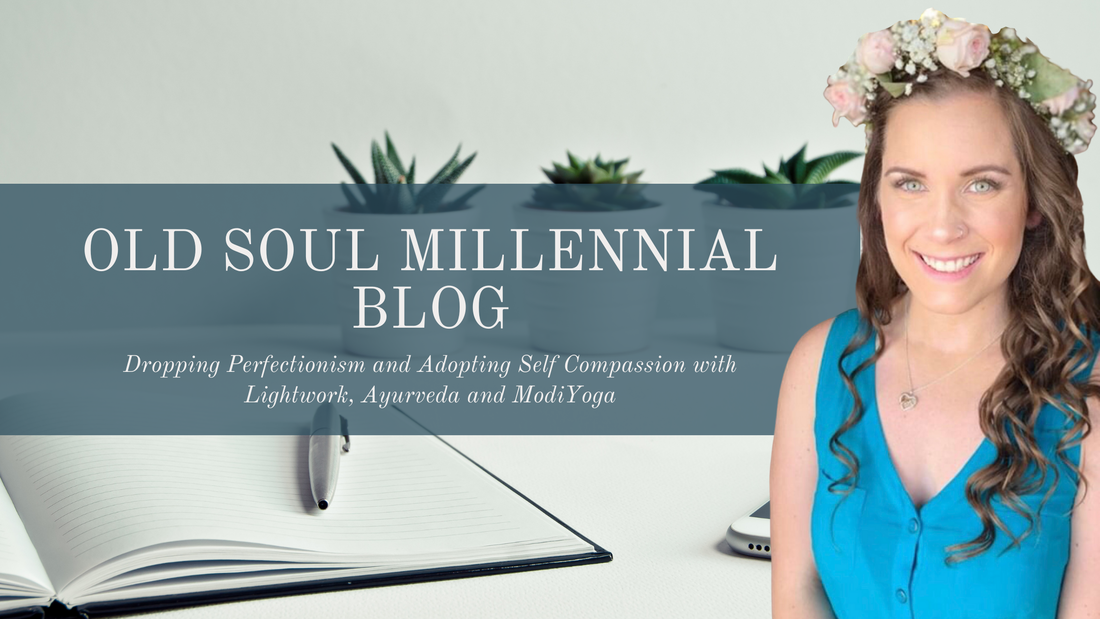
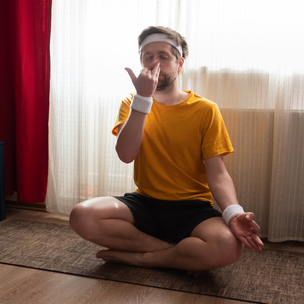

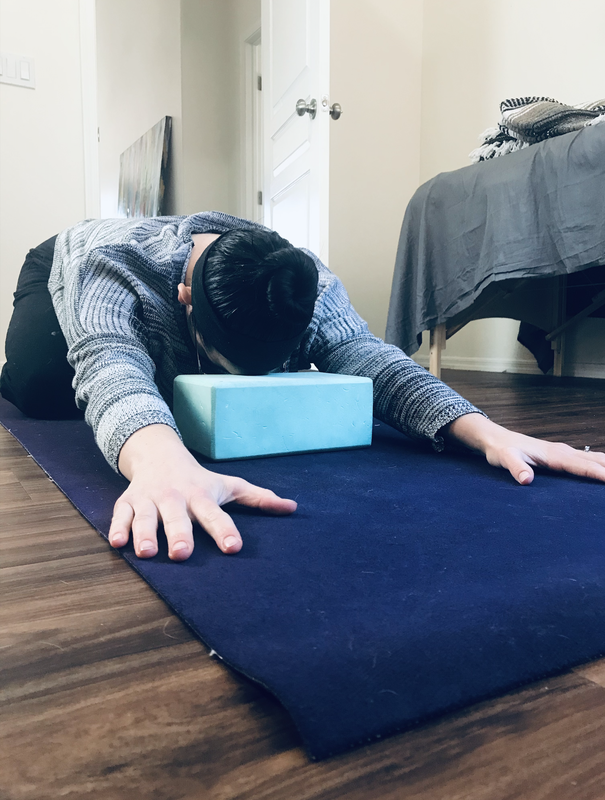
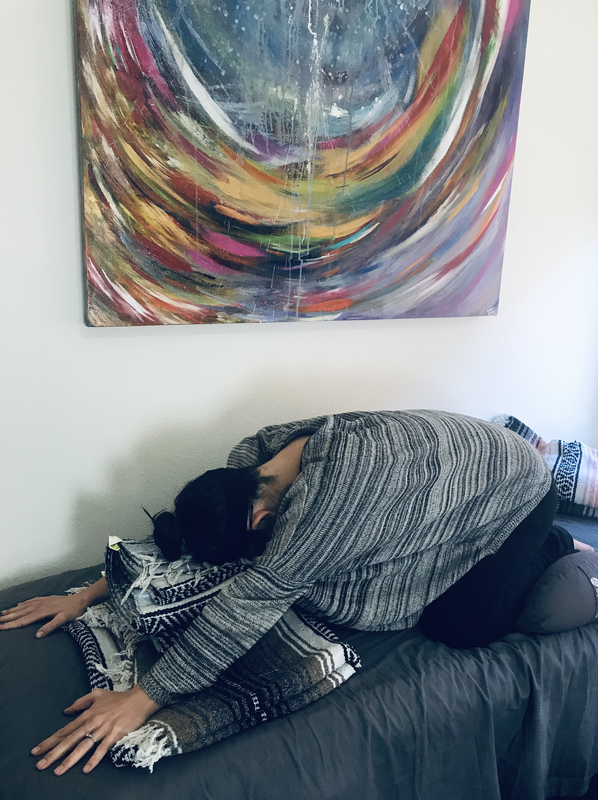
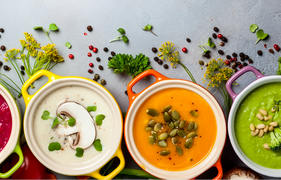
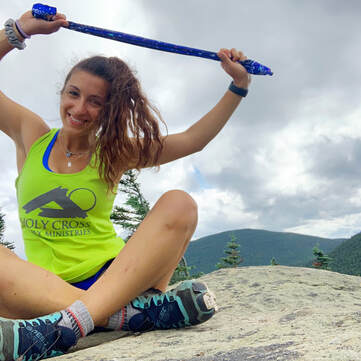
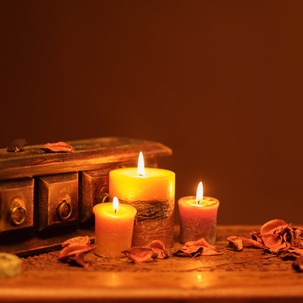
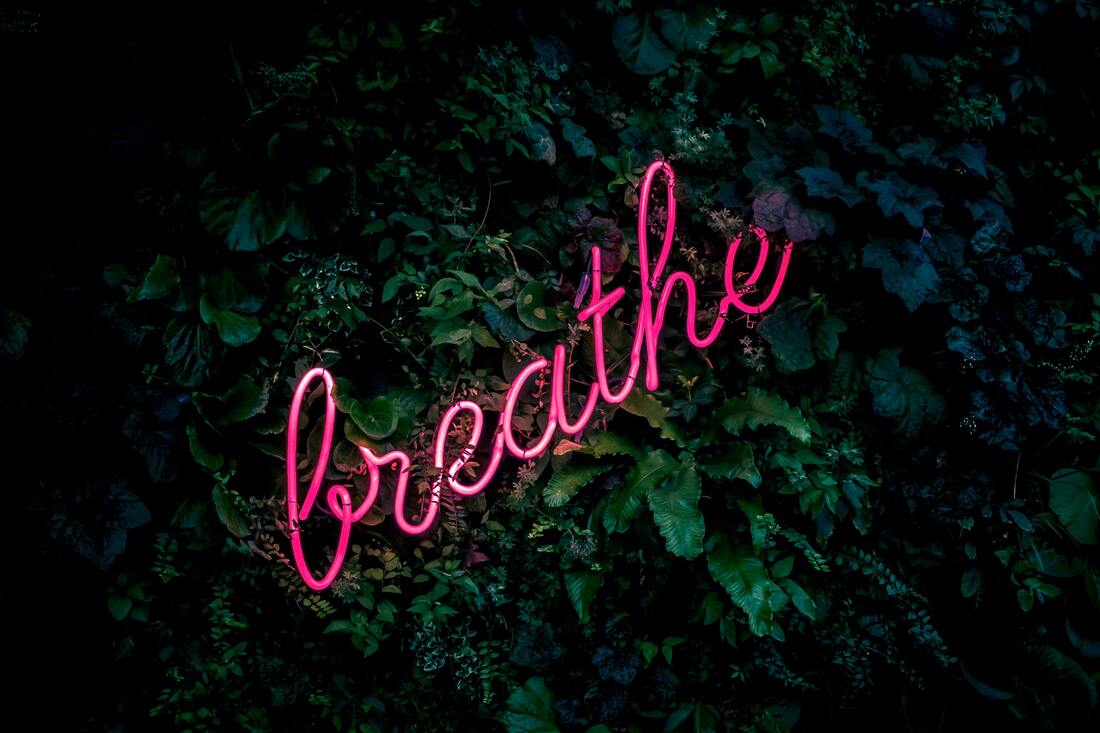
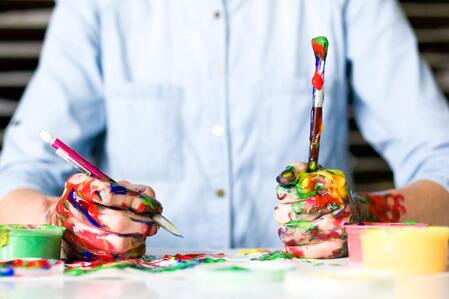
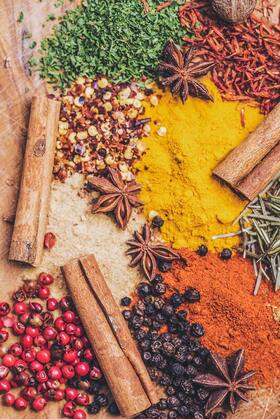

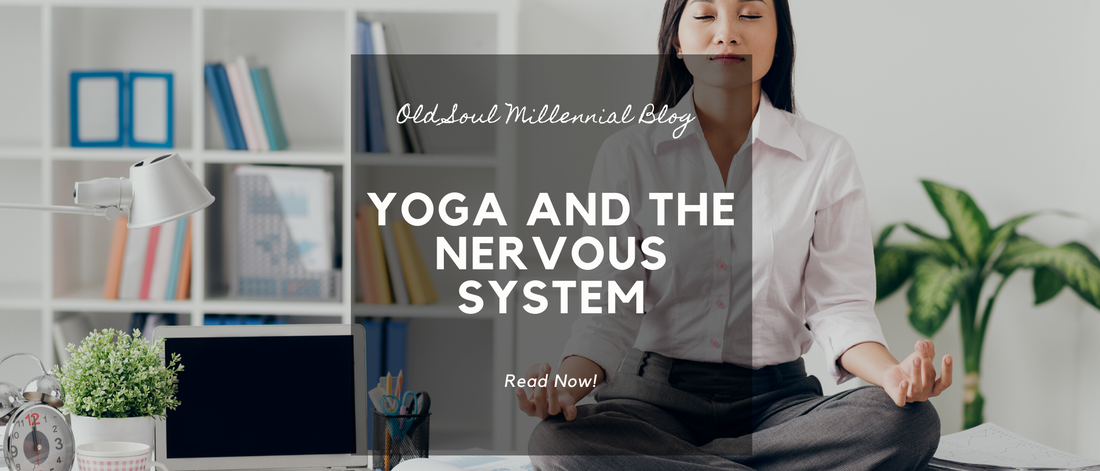
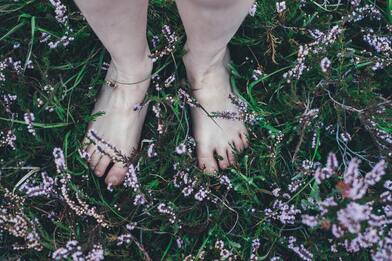
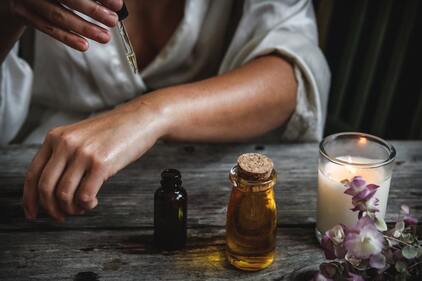
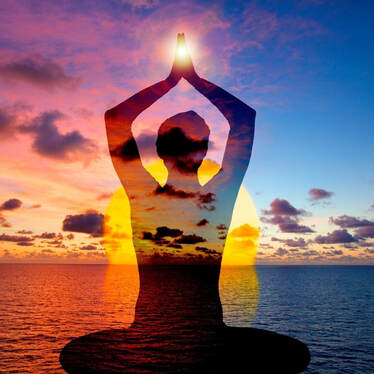



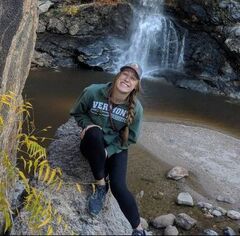
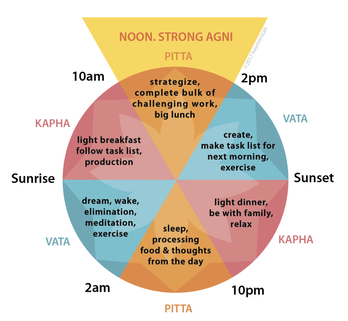
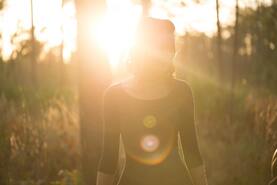
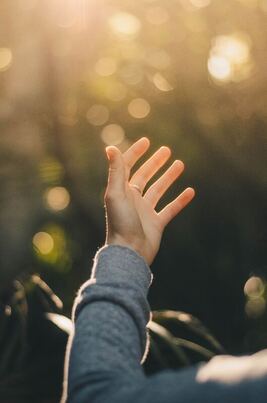
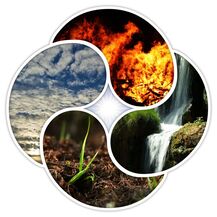

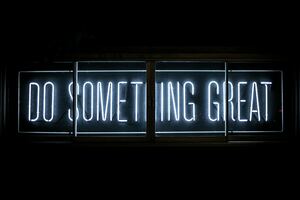


 RSS Feed
RSS Feed
